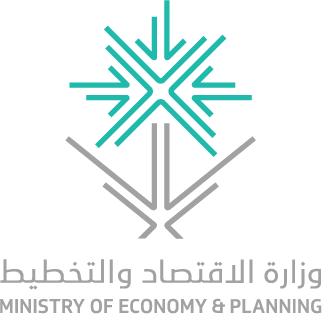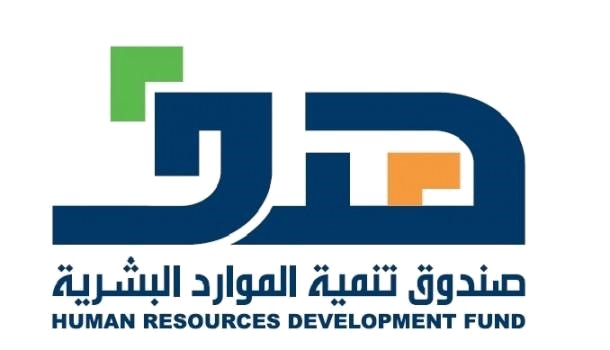MARKET INSIGHT
A deep dive look into the sectors
Select a Sector
Industry Intermediate Chemicals
Intermediate Chemicals
MARKET INSIGHT
Segment Rational
RATIONAL
KSA’s Intermediate Chemicals industry has grown based on the development of Basic Chemicals in the country over the last 50 years. The Kingdom has successful track record in the Basics cluster, while the Intermediates Chemicals sector have big potential for growth specially in C3,C4 and aromatics. This will be achieved through the adoption of liquid cracking technologies. Local players have already grown portfolios of intermediates, despite the number of “molecular gaps” needed to support downstream specialties and conversion. These profiles represent a good platform and show the ability of the industry in the Kingdom to set ambitious targets in this cluster.
Segment Trends and Value Proposition
SEGMENT TRENDS
Shifts in end-user applications.
Pandemics and worldwide crisis.
Stronger IP and licensing protection.
Disruption of global trade.
Value Proposition
• Growing capabilities in existing molecules and expanding the Intermediate Chemicals portfolio to achieve regional and global footprint in new molecules.
• The industry will capitalize on local and regional demand for downstream specialties and conversion clusters that need a supply of integrated Intermediates capacities to grow competitively.
• The global Chemicals market is expected to grow at a 3.7% CAGR, doubling production volumes from 1,870 mn ton/year in 2020 to 3,867 mn ton/year by 2040.
• The Chemicals sector is also expected to be a driver of demand for oil & gas, gaining share from all other segments, from ~13% in 2020 to ~31% in 2040.
• KSA is estimated to account for 2.4% of global market share in Intermediate Chemicals. KSA is a global leader in methyl tertiary-butyl ether (MTBE) and styrene with 10% and 6% of the global capacities.
Global Production Of Chemicals Products
• The global chemicals market is expected to grow at 3.7% CAGR, doubling production volumes from 1,870 Mn Ton/year to 3,867 Mn Ton/year by 2040.
• Chemical sector is also expected to be a driver of demand for oil & gas, gaining share from all other segments, from ~13% in 2020 to ~31% in 2040.
• As oil demand continues to grow but is expected to peak by 2040, chemicals is becoming a most relevant area of focus for O&G countries and companies.
Estimates of historical and future demand for Ethyl Alcohol in the domestic/export market (in liters)
Global Oil & Gas Consumption By Sector (%)
• The global chemicals market is expected to grow at 3.7% CAGR, doubling production volumes from 1,870 Mn Ton/year to 3,867 Mn Ton/year by 2040.
• Chemical sector is also expected to be a driver of demand for oil & gas, gaining share from all other segments, from ~13% in 2020 to ~31% in 2040.
• As oil demand continues to grow but is expected to peak by 2040, chemicals is becoming a most relevant area of focus for O&G countries and companies.
Comparison of crude oil and natural gas consumption in Saudi Arabia (million tons of oil equivalent)
The Kingdom is home to the Ghawar field, the world’s biggest conventional onshore oil field in terms of reserves and daily output. The oil field has been producing since 1951, and it is estimated to continue pumping oil at its current highest production capacity of 3.8 million barrels a day beyond 2050. Therefore, the country is likely to have a high demand for drilling rigs in the onshore oil and gas operations.
Comparison of crude oil and natural gas reserves in Saudi Arabia (million tons of oil equivalent)
In 2021, Saudi Arabia’s crude oil reserves experienced a slight increase of 0.04%, reaching a total of 37,065 million tons of oil equivalent (TOE) or 267,192 million barrels. However, during the same year, both crude oil production and exports declined. Production dropped by 1.23%, amounting to 462.01 million TOE or 3,331 million barrels, while exports fell by 6.11%, totaling 315.31 million TOE or 2,273 million barrels. This decline was attributed to the economic downturn caused by the global COVID-19 pandemic.
To stabilize crude oil prices, reduce record-high oil inventory levels, and restore global market balance, Saudi Arabia, in collaboration with other OPEC+ members, implemented voluntary production cuts starting in October 2022.
The Most Important Countries Exporting Ethyl Alcohol in 2021 (in thousand dollars)
Quantity of Exports of Ethyl Alcohol To The Most Important Countries in The World in 2021 (Tons)
The Most Important Countries Importing Ethyl Alcohol in 2021 (in thousand dollars)
Quantity of Imports of Ethyl Alcohol To The Most Important Countries in The World in 2021 (Tons)
Activated Alumina Imports to Saudi Arabia
Approximately 88% of all imported aluminum oxide came from Australia and the remaining 12% came from various countries like the USA, UAE, China and France.
The imported quantities in the years (2018-2023) maintained an average of 24,800 tons and during the period (2016-2023) a negative CAGR of 17% was recorded as there are other readily substitute such as activated carbon and other zeolites with comparable performance. Nevertheless, the imported quantities and values in excess of SAR 500 million justifies the localization of these products in the absence of a local producer.
Saudi Arabia Activated Alumina Market Size (in Tons)
Activated Alumina Imports from Saudi Arabia
Approximately 88% of all imported aluminum oxide came from Australia and the remaining 12% came from various countries like the USA, UAE, China and France.
The imported quantities in the years (2018-2023) maintained an average of 24,800 tons and during the period (2016-2023) a negative CAGR of 17% was recorded as there are other readily substitute such as activated carbon and other zeolites with comparable performance. Nevertheless, the imported quantities and values in excess of SAR 500 million justifies the localization of these products in the absence of a local producer.
Absorbent molecular sieve exports from Saudi Arabia
Saudi Arabia Molecular Sieves Market Size (in Tons)
Zinc oxide ambertus taha sodi arabic
Saudi Arabia Zinc Oxide Market Size (in Tons)
Imports of aromatic hydrocarbon mixtures (demulsifiers) to the Kingdom of Saudi Arabia
Exports of aromatic hydrocarbon mixtures (demulsifiers) from Saudi Arabia
Aromatic Hydrocarbonate Blends (De-Emulsifiers) Market Size in Tons in Saudi Arabia
Zinc Oxide Exports from Saudi Arabia
Middle East & Africa Polyurethane Market Size (US$ Billion)
The polyurethane market size in the Middle East and Africa is estimated at US$2.55 billion in 2024, and is expected to reach US$3.28 billion by 2029, at a CAGR of 5.10% during the forecast period (2024- 2029).
The Expected Local Production Volume of The EPDM Rubber In Saudi Arabia (Tons)
Market Evolution Of Chemical Sales Per Region
• Growth is driven by Asia, with China alone owning almost half of the market size of global chemical sales by 2030.
• Market growth in value is higher than global production expansion (in value estimated at CAGR of 5.4%) given that portfolio is steering towards more innovative and higher value-added products.
Breakdown of Chemicals by Major Groups
KSA’s global share in chemicals volume is 4.7%, with a portfolio concentrated in basics and commodity derivatives produced with the gas crackers output.
Global and KSA Intermediate Chemical Capacity Comparison
• In intermediate chemicals, KSA is estimated to capture 2.4% of the global market share, and 10% and 6% of global capacities in MTBE and Styrene, respectively.
• KSA is a global leader in MTBE and Styrene with 10% and 6% of the global capacities respectively.
• Methanol derivatives, in particular Formaldehyde chains, represent a growth opportunity for KSA’s chemicals sector, driven by strong local demand rising at 3.4% CAGR.
Value of Regional Imports of Ethyl (Thousand Dollars)
The Evolution of The Value of Saudi Imports of Ethyl Alcohol (Thousands Dollars)
Local Expected Gap Quantity in Ethyl Alcohol (Liters)
Covid-19 Impact on Global Market
Global consumption of chemicals is evenly distributed across all global sectors, with varying market progress.
The data and information provided through Daleel platform are for indicative purpose, the provided data and information can be assessed further and analyzed as part of the feasibility studies. In addition, following are other key sources of information that can be used for business case development.
Key Sources for Data

National Geological Database
Reliable national geological and topographic data repository for the whole kingdom of Saudi Arabia including geological and topographic maps, Mineral Occurrences Documentation System (MODS), geochemistry and geophysics data, borehole data, surface samples data and more.

Invest Saudi
For information about investment opportunities in the kingdom to both foreign and domestic investors, as well as private sector businesses please visit Invest Saudi
Tariff Rates and Data
Through the website of the Zakat, Tax and Customs Authority, you can find the tariff rates and data for all kinds of products.

Import Data
Through the website of General Authority for Statistics, you can find detailed data on Import Statistics for all kind of goods.

Export Data
Through the website of General Authority for Statistics, you can find detailed data on Export Statistics for all kind of goods.

Factories Directory
The Factories Directory is provided by the National Industrial Information Center to enable the user to inquire about factories in the Kingdom by activity, production and location, in addition to other data and information.

Ministry of Economy And Planning
A unified platform to present and analyze the latest economic and social the kingdom and its regions in visually interactive ways that facilitate understanding of the Saudi economic landscape.

ZADD
ZAADD is one of the services of the Nine Tenths program launched by the Human Resources Development Fund with the aim of developing small and medium-sized enterprises and making them job-producing institutions. The program also enjoys support from many data-providing entities.